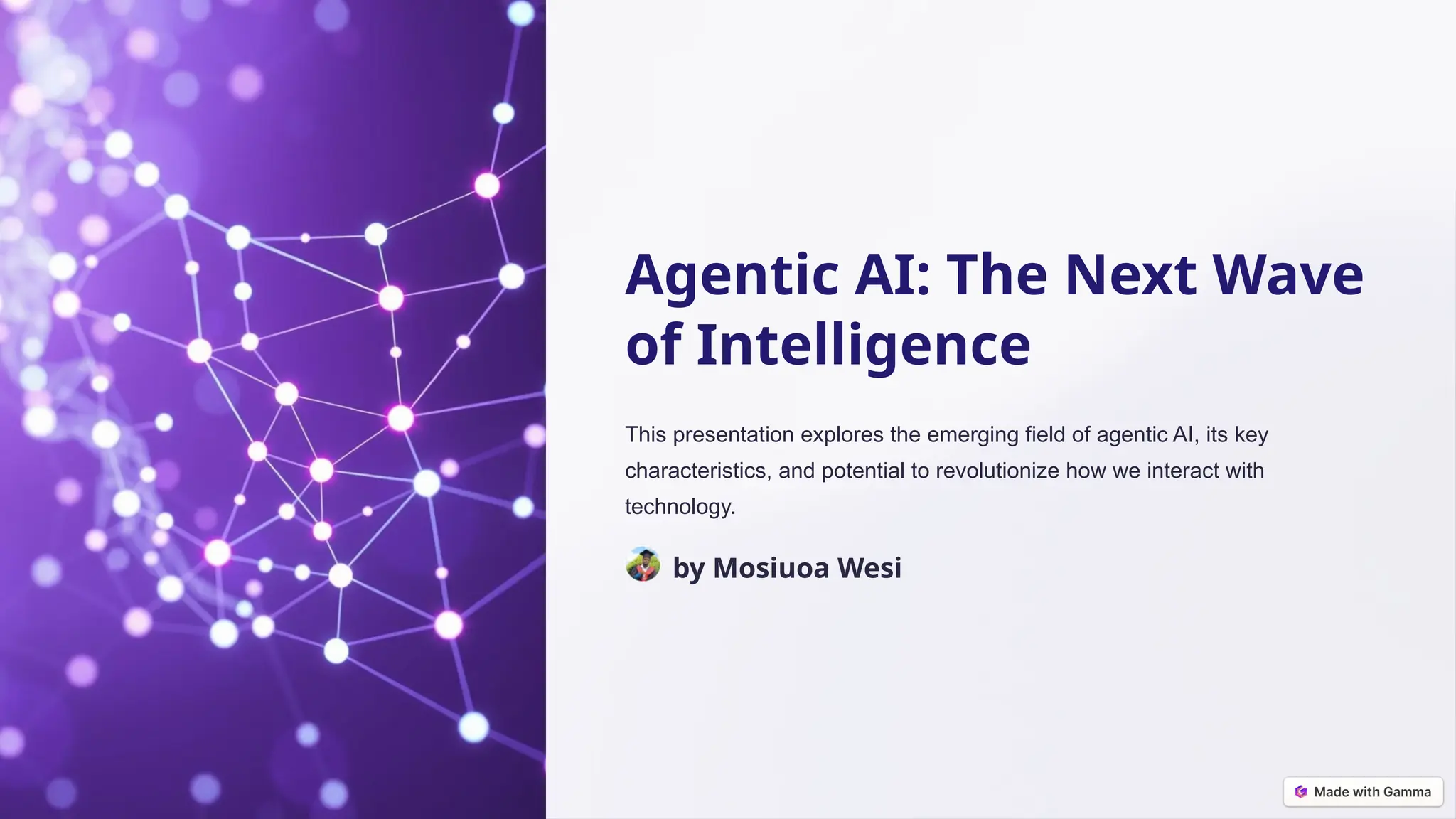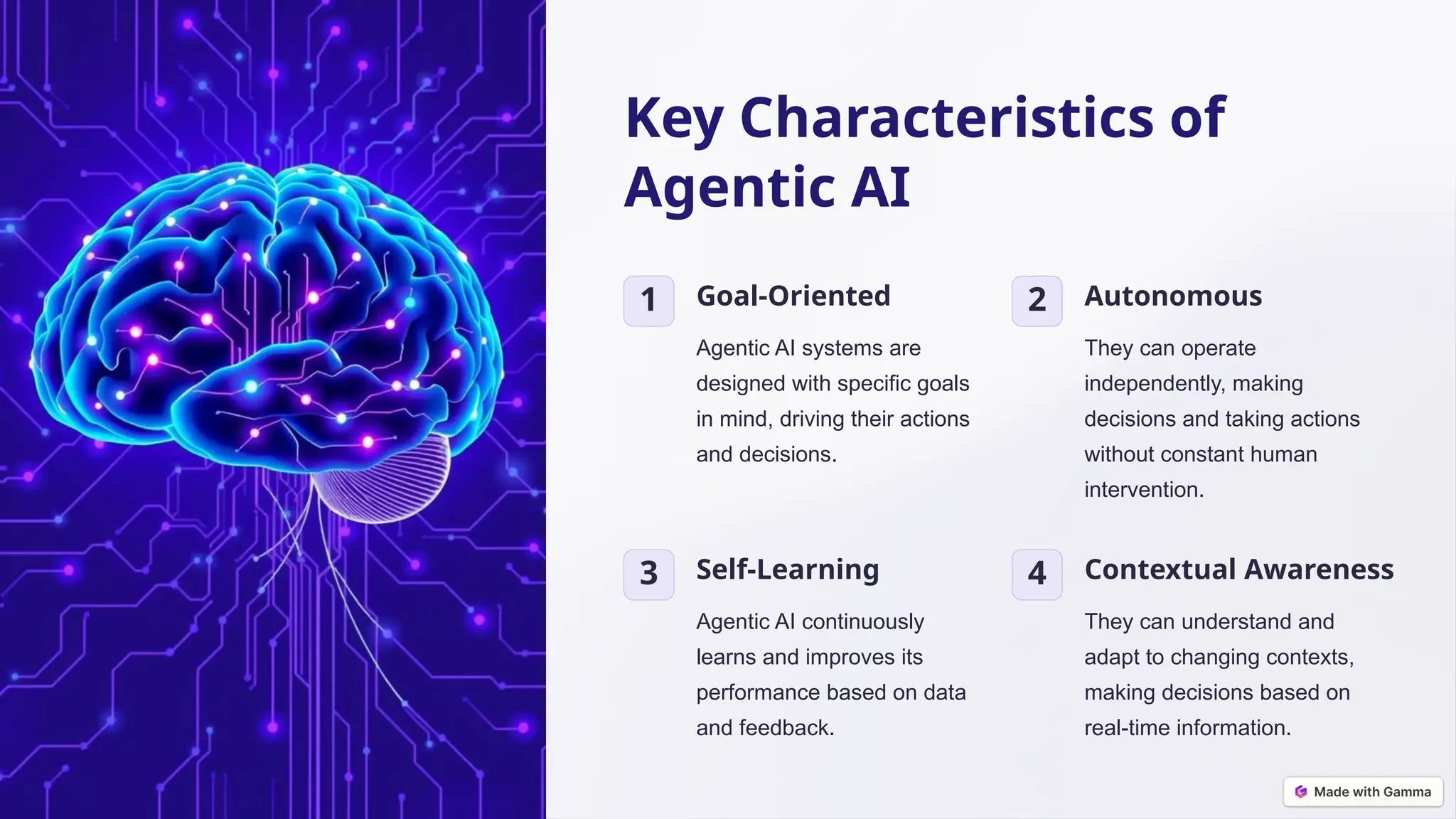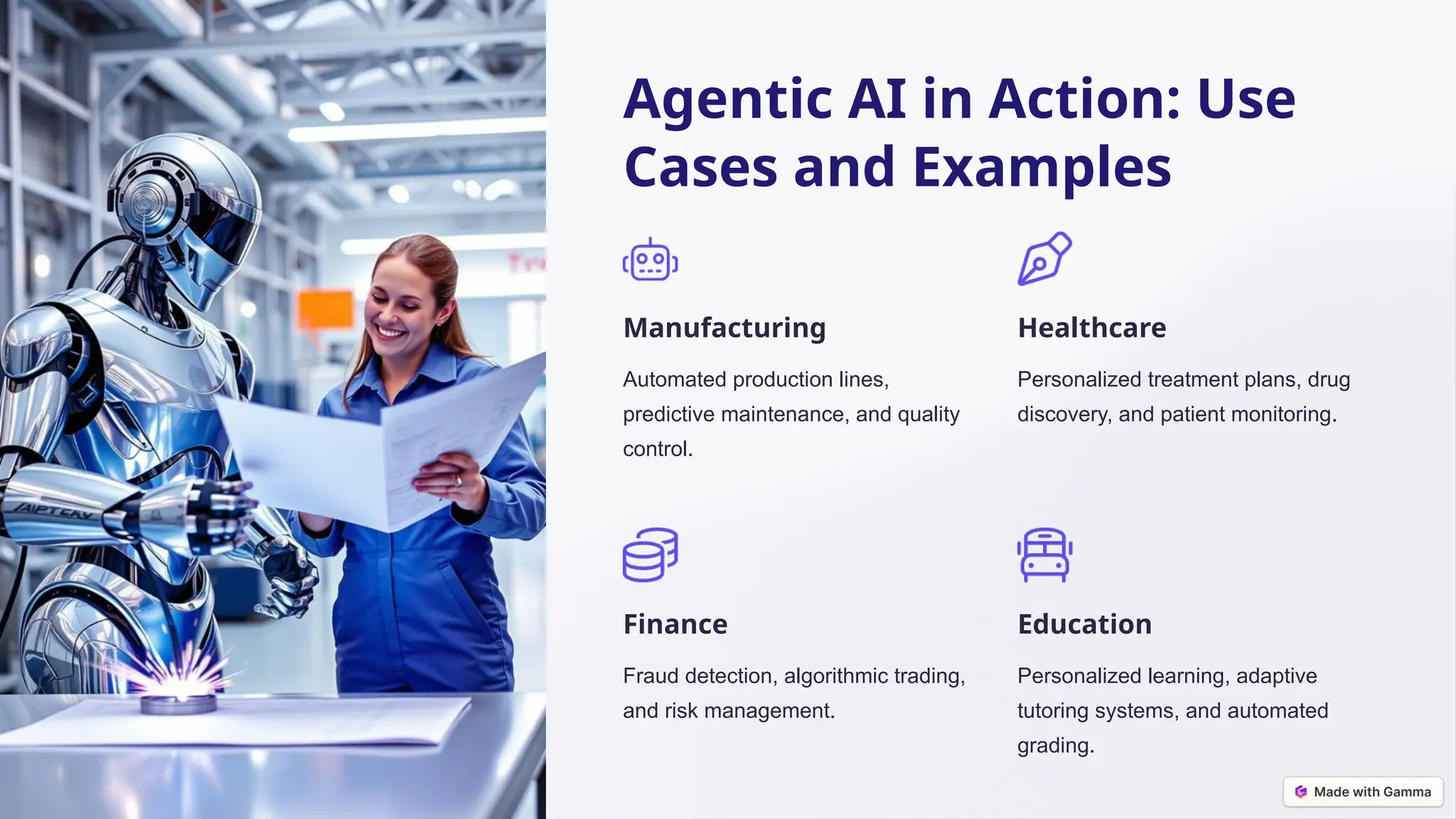The document discusses agentic AI, a proactive and adaptive technology that goes beyond reactive systems by actively pursuing goals and learning from experiences. It highlights key characteristics such as autonomy, self-learning, and contextual awareness, along with its benefits for productivity and decision-making across various industries like manufacturing, healthcare, and finance. Additionally, it addresses design patterns for implementing agentic AI and considers challenges such as ethical implications and data privacy.







